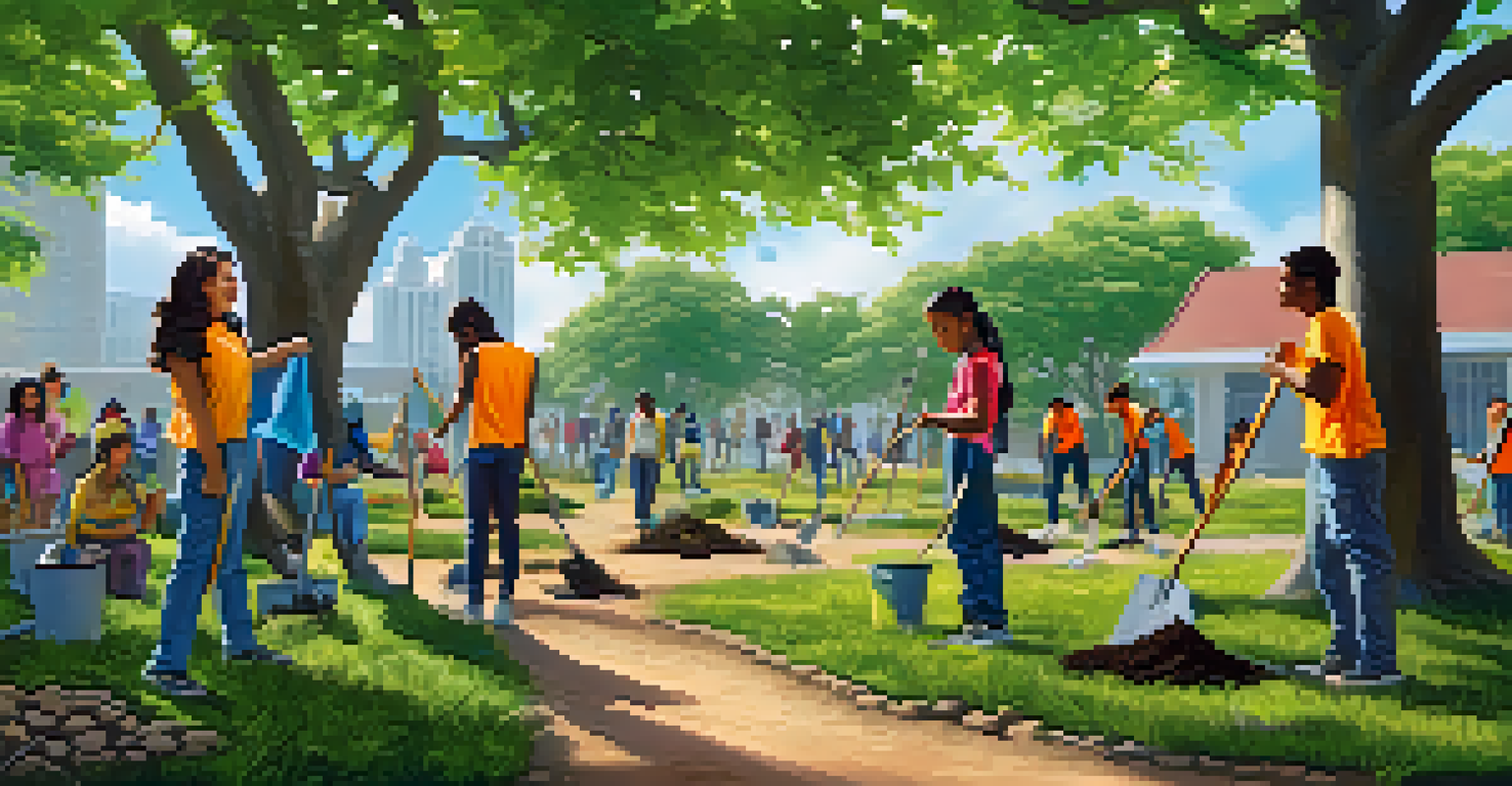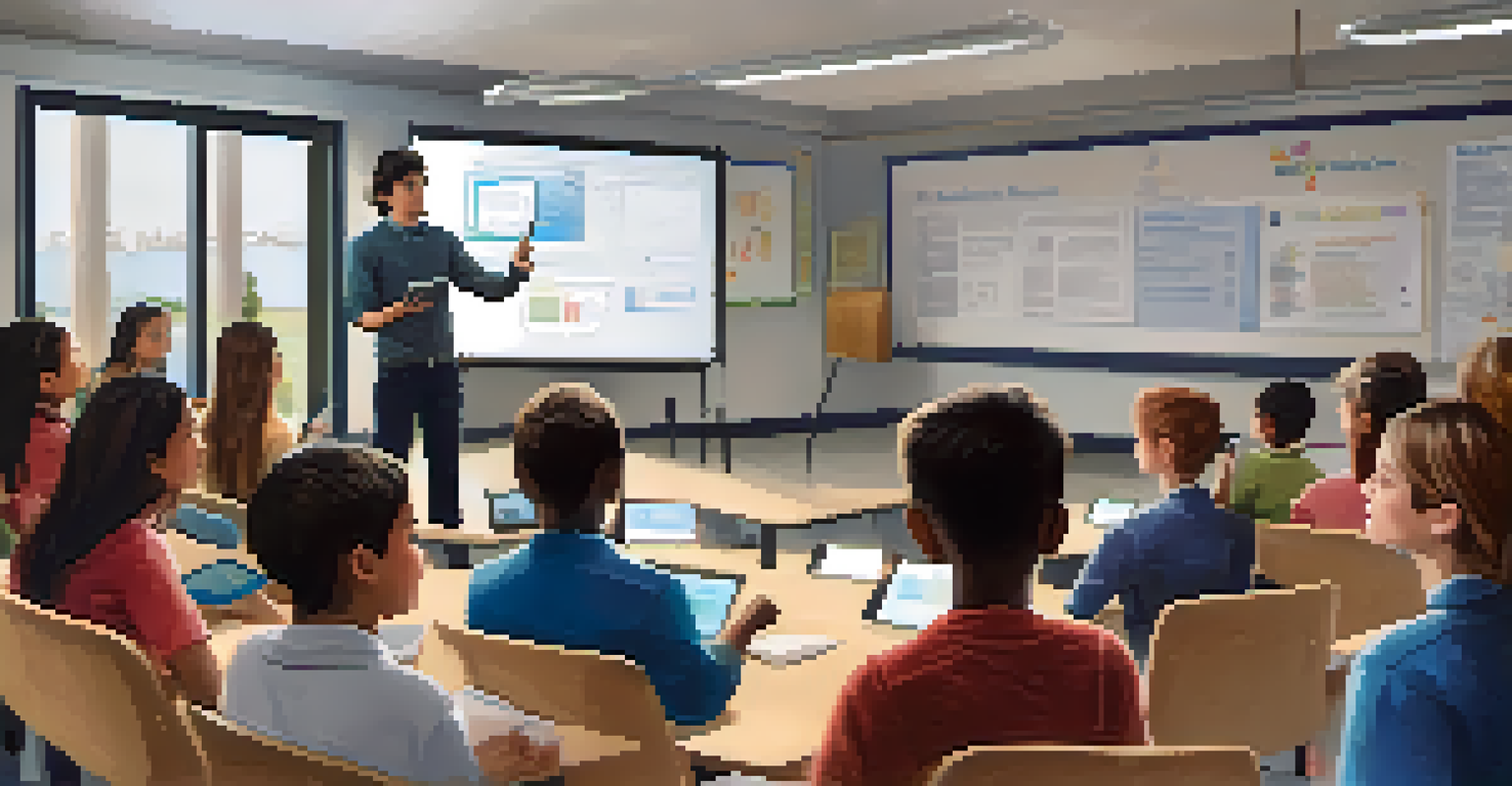Engaging Students with Real-World Problem Solving

Understanding Real-World Problem Solving in Education
Real-world problem solving is an approach that connects classroom learning to genuine challenges faced in everyday life. This method encourages students to apply theoretical knowledge in practical situations, fostering deeper understanding and retention. By engaging with real problems, students not only learn critical thinking skills but also see the relevance of their education.
Problems are not stop signs, they are guidelines.
For instance, a math class might tackle budgeting for a community project, allowing students to use their skills in a meaningful context. This creates a sense of purpose in their learning, making it more engaging and motivating. Ultimately, this approach helps students grasp complex concepts more easily.
Moreover, real-world problem solving nurtures collaboration among students, as they often work in groups to tackle challenges. This teamwork builds interpersonal skills and creates a supportive learning environment, essential for personal and academic growth.
The Benefits of Real-World Problem Solving
Engaging students with real-world problem solving has numerous benefits that extend beyond the classroom. First, it promotes critical thinking by requiring students to analyze situations, evaluate options, and make informed decisions. This analytical mindset is crucial for their future careers, no matter the field they choose.

Additionally, this approach enhances student motivation. When learners see the direct impact of their work on real issues, they become more invested in their studies. For example, participating in a local environmental project can ignite a passion for science and sustainability, inspiring students to become lifelong learners.
Real-World Problems Enhance Learning
Connecting classroom lessons to real-life challenges helps students apply knowledge practically, fostering critical thinking and deeper engagement.
Lastly, real-world problem solving cultivates resilience. Students learn to navigate setbacks and adapt their strategies, which prepares them for challenges in both their academic and personal lives. This resilience is a vital skill in an ever-changing world.
Creating a Real-World Problem Solving Framework
To effectively implement real-world problem solving in the classroom, educators need a robust framework. Start by identifying relevant problems that resonate with students' interests and community needs. This could involve local issues like food waste or global challenges such as climate change, making lessons feel urgent and meaningful.
The only real mistake is the one from which we learn nothing.
Next, design projects that allow for exploration and experimentation. Students should have the freedom to approach problems creatively, encouraging innovation and diverse thinking. For instance, a project on reducing plastic use could lead to various solutions, from awareness campaigns to product design.
Lastly, incorporate reflection and feedback into the process. Regularly discussing what worked, what didn’t, and how students can improve fosters a growth mindset. This reflection not only strengthens learning but also empowers students to take ownership of their educational journey.
Integrating Technology in Problem Solving
Technology plays a pivotal role in enhancing real-world problem solving in education. Digital tools can facilitate research, collaboration, and presentation, making projects more dynamic and engaging. For instance, students can use online platforms to connect with experts or gather data from around the globe, enriching their projects.
Moreover, technology can help simulate real-world scenarios. Virtual labs or interactive software can provide a safe space for students to experiment with solutions before applying them in the real world. This hands-on experience builds confidence and prepares them for real-life situations.
Collaboration Builds Essential Skills
Teamwork in problem-solving projects cultivates communication and interpersonal skills, preparing students for collaborative environments in the future.
Additionally, technology allows for innovative presentations of their findings. Students can create videos, websites, or infographics to showcase their work, making the learning process more interactive and exciting. This not only hones their technical skills but also allows for creative expression.
Encouraging Collaboration and Teamwork
Real-world problem solving thrives on collaboration, as it mirrors how challenges are tackled in the professional world. Encouraging teamwork in the classroom helps students develop essential communication skills. When they work together, they learn to listen, share ideas, and respect diverse perspectives.
Group projects can also simulate real-world roles, where each student takes on a specific responsibility. For instance, in a project addressing a local issue, some students might research while others handle communication or presentation aspects. This division of labor mimics real-life scenarios, preparing students for future collaborative efforts.
Furthermore, collaboration fosters a sense of community among students. As they navigate challenges together, they build relationships and support each other’s learning. This camaraderie not only enhances the educational experience but also creates a positive classroom environment.
Assessing Student Learning through Problem Solving
Assessment in real-world problem solving requires a shift from traditional testing methods. Instead of focusing solely on memorization, educators should evaluate students on their problem-solving processes and outcomes. This can include peer reviews, self-assessments, and presentations that showcase their work.
Rubrics can provide clear criteria for evaluation, outlining expectations for both collaborative efforts and individual contributions. This transparency helps students understand what is required for success and encourages them to strive for excellence in their projects.
Growth Mindset Fuels Student Resilience
Encouraging a growth mindset helps students view challenges as opportunities, fostering resilience and a willingness to tackle complex problems.
Moreover, formative assessments throughout the project can guide learning. Regular check-ins and feedback sessions allow educators to address challenges and celebrate progress, ensuring students remain engaged and motivated throughout their learning journey.
Cultivating a Growth Mindset in Students
A growth mindset is crucial for students engaged in real-world problem solving. This mindset encourages learners to view challenges as opportunities for growth rather than obstacles. When students believe their abilities can improve through effort, they are more likely to embrace complex problems with enthusiasm.
To cultivate this mindset, educators can model resilience by sharing their own learning experiences and setbacks. Discussing how they have overcome obstacles reinforces the idea that failure is a part of the learning process. This creates a supportive environment where students feel safe to take risks.

Additionally, celebrating effort and progress, rather than just outcomes, helps reinforce a growth mindset. Acknowledging small victories encourages students to persist in the face of challenges, ultimately leading to greater success in both their academic and personal lives.